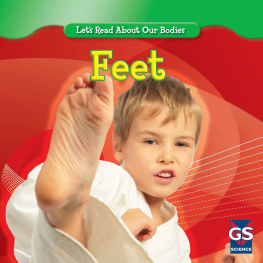THE DANCE Historic Illustrations
of Dancing
from 3300 B.C. to 1911 A.D. |
BY
AN ANTIQUARY LONDON
JOHN BALE, SONS & DANIELSSON, LTD.
83-91, GREAT TITCHFIELD STREET, OXFORD STREET, W Respectfully dedicated to Dr. Eleanor Maxwell. |
1911 | CONTENTS.
Egyptian, Assyrian, Hebrew and Phoenician Dancing.
Dancing with the Greeks.
Etruscan-South Italian, Roman Dancing, etc.
The "Early English" and "Mediaeval" dance to the fourteenth century.
Society dancing from the fifteenth century.
The Modern Theatre Dance.
|
This sketch of the iconography of the dance does not pretend to be a history of the subject, except in the most elementary way. It may be taken as a summary of the history of posture; a complete dance cannot be easily rendered in illustration.
The text is of the most elementary description; to go into the subject thoroughly would involve years and volumes. The descriptions of the various historic dances or music are enormous subjects; two authors alone have given 800 dances in four volumes.[]
It would have been interesting if some idea of the orchesography of the Egyptians and Greeks could have been given; this art of describing dances much in the manner that music is written is lost, and the attempts to revive it have been ineffective. The increasing speed of the action since the days of Lulli would now render it almost impossible.
It is hoped that this work may be of some use as illustrating the costume, position and accessories of the dance in various periods to those producing entertainments.
To the reader desirous of thoroughly studying the subject a bibliography is given at the end.
FOOTNOTES
: Thompson's complete collection of 200 country dances performed at Court, Bath, Tunbridge, and all public assemblies, with proper figures and directions to each set for the violin, German flute, and hautboy, 8s. 6d. Printed for Charles and Samuel Thompson, St. Paul's Churchyard, London, where may be had the yearly dances and minuets. Four volumes, each 200 dances. 1770-1773.
Historic Illustrations of Dancing.
divider
Fig. 1: Dancing to the clapping of bands. Egyptian, from the tomb of Ur-ari-en-Ptah, 6th Dynasty, about 3300 B.C. (British Museum.) |
CHAPTER I.
Egyptian, Assyrian, Hebrew, and Phoenician Dancing. The Ritual Dance of Egypt. Dancing Examples from Tomb of Ur-ari-en-Ptah, 6th Dynasty, British Museum. Description of Dancing from Sir G. Wilkinson; of the Egyptian Pipes and Hieroglyphics of Dancing, &c. Phoenician Round Dances, from a Limestone Group found at Cyprus, and Bronze Patera from Idalium, Cyprus.
In this work it is not necessary to worry the reader with speculations as to the origin of dancing. There are other authorities easily accessible who have written upon this theme.
Dancing is probably one of the oldest arts. As soon as man was man he without doubt began to gesticulate with face, body, and limbs. How long it took to develop bodily gesticulation into an art no one can guessperhaps a millennium.
In writing of dancing, one will therefore include those gesticulations or movements of the body suggesting an idea, whether it be the slow movement of marching, or the rapid gallop, even some of the movements that we commonly call acrobatic. It is not intended here to include the more sensual movements of the East and the debased antique.
Generally the antique dances were connected with a religious ritual conceived to be acceptable to the Gods. This connection between dancing and religious rites was common up to the 16th century. It still continues in some countries.
In some of the earliest designs which have come down to us the dancers moved, as stars, hand in hand round an altar, or person, representing the sun; either in a slow or stately method, or with rapid trained gestures, according to the ritual performed.
Dancing, music and poetry were inseparable. Dancing is the poetry of motion, and its connection with music, as the poetry of sound, occurs at all times. In our own day musical themes are marked by forms originally dance times, as waltz time, gavotte time, minuet time, etc.
Fig. 2: Greek figures in a solemn dance. From a vase at Berlin. |
Amongst the earliest representations that are comprehensible, we have certain Egyptian paintings, and some of these exhibit postures that evidently had even then a settled meaning, and were a phrase in the sentences of the art. Not only were they settled at such an early period (B.C. 3000, fig. 1) but they appear to have been accepted and handed down to succeeding generations (fig. 2), and what is remarkable in some countries, even to our own times. The accompanying illustrations from Egypt and Greece exhibit what was evidently a traditional attitude. The hand-in-hand dance is another of these.
The earliest accompaniments to dancing appear to have been the clapping of hands, the pipes,[] the guitar, the tambourine, the castanets, the cymbals, the tambour, and sometimes in the street, the drum.
The following account of Egyptian dancing is from Sir Gardiner Wilkinson's "Ancient Egypt"[]:
Fig. 3: The hieroglyphics describe the dance. |
"The dance consisted mostly of a succession of figures, in which the performers endeavoured to exhibit a great variety of gesture. Men and women danced at the same time, or in separate parties, but the latter were generally preferred for their superior grace and elegance. Some danced to slow airs, adapted to the style of their movement; the attitudes they assumed frequently partook of a grace not unworthy of the Greeks; and some credit is due to the skill of the artist who represented the subject, which excites additional interest from its being in one of the oldest tombs of Thebes (B.C. 1450, Amenophis II.). Others preferred a lively step, regulated by an appropriate tune; and men sometimes danced with great spirit, bounding from the ground, more in the manner of Europeans than of Eastern people. On these occasions the music was not always composed of many instruments, and here we find only the cylindrical maces and a woman snapping her fingers in the time, in lieu of cymbals or castanets.
"Graceful attitudes and gesticulations were the general style of their dance, but, as in all other countries, the taste of the performance varied according to the rank of the person by whom they were employed, or their own skill, and the dance at the house of a priest differed from that among the uncouth peasantry, etc.
"It was not customary for the upper orders of Egyptians to indulge in this amusement, either in public or private assemblies, and none appear to have practised it but the lower ranks of society, and those who gained their livelihood by attending festive meetings.
"Fearing lest it should corrupt the manners of a people naturally lively and fond of gaiety, and deeming it neither a necessary part of education nor becoming a person of sober habits, the Egyptians forbade those of the higher classes to learn it as an amusement.











